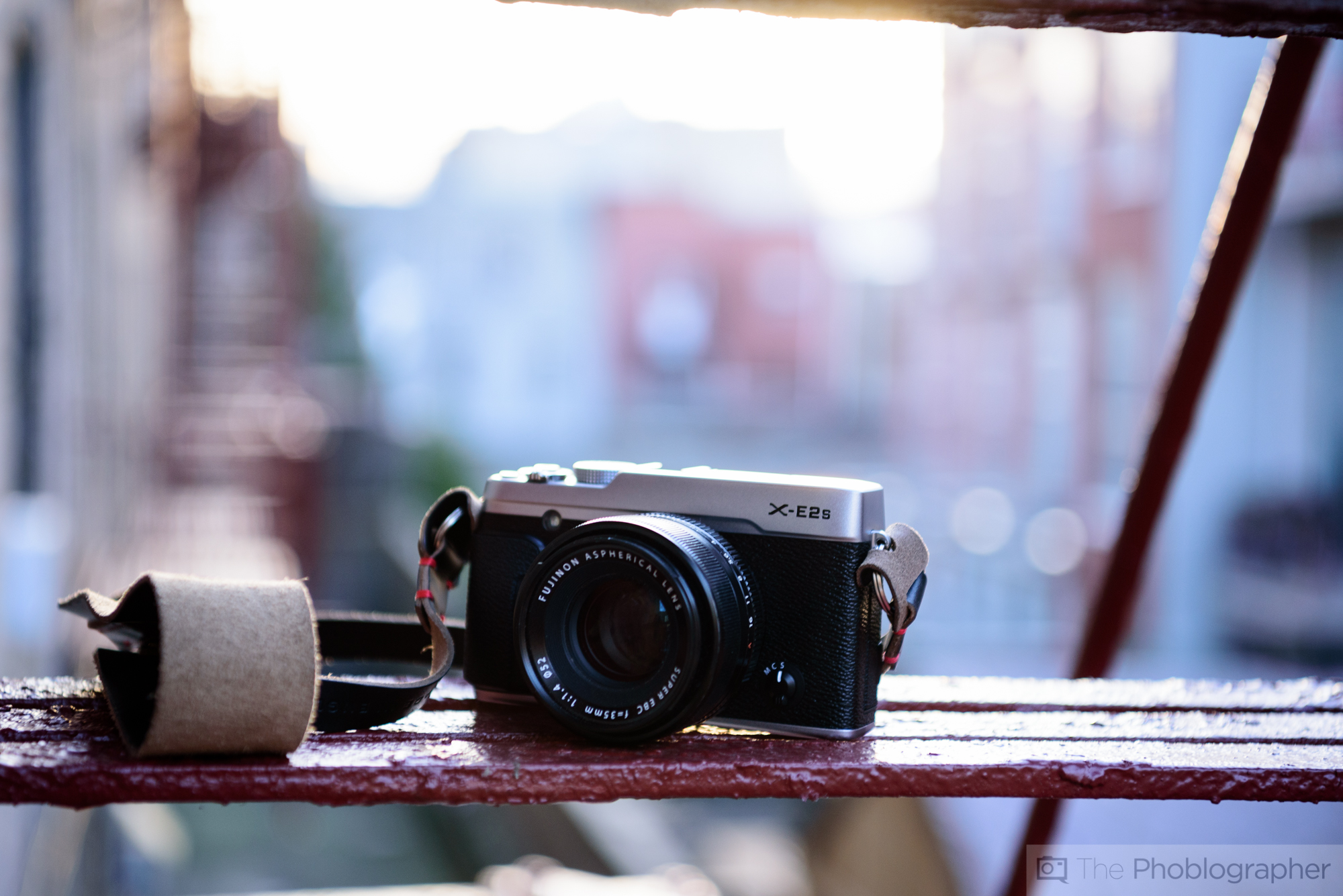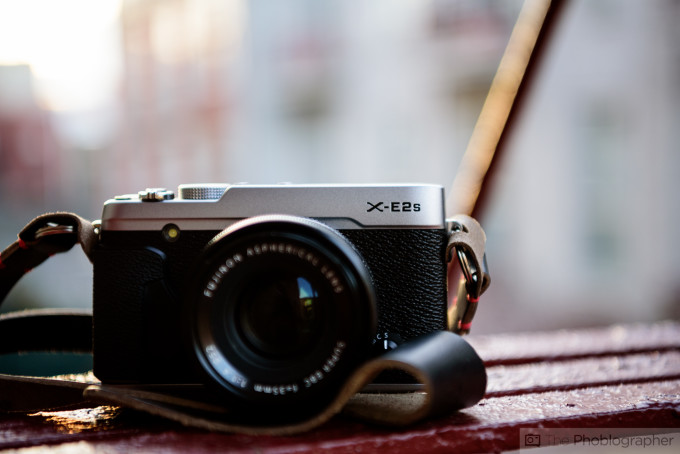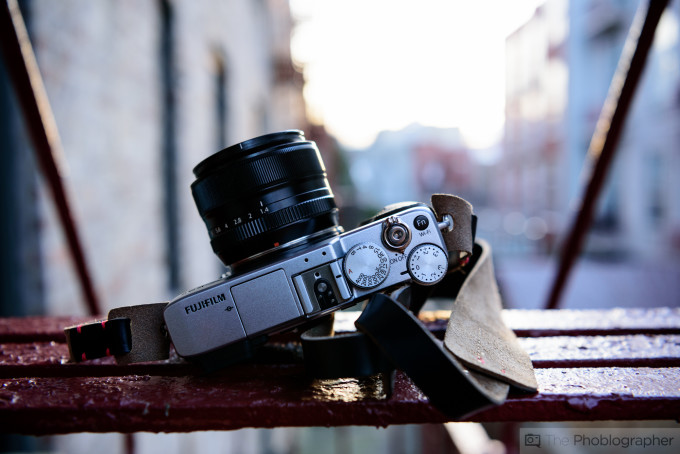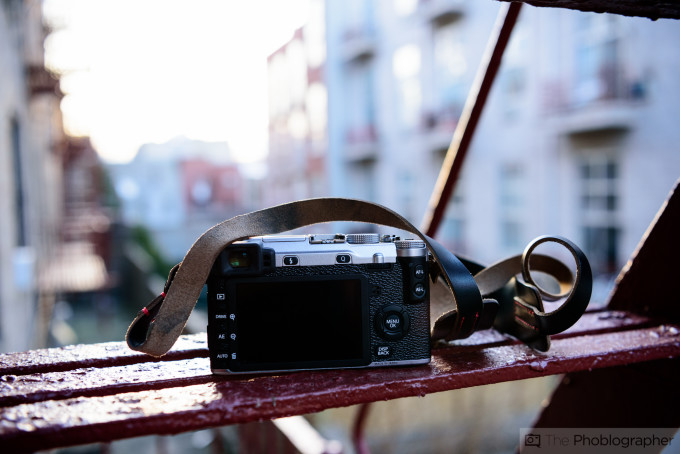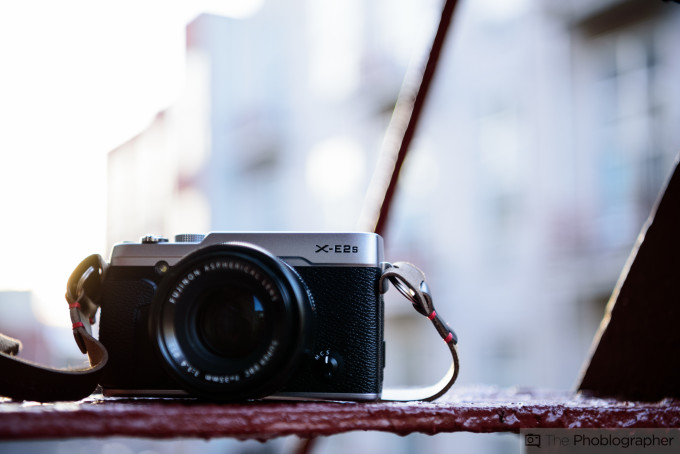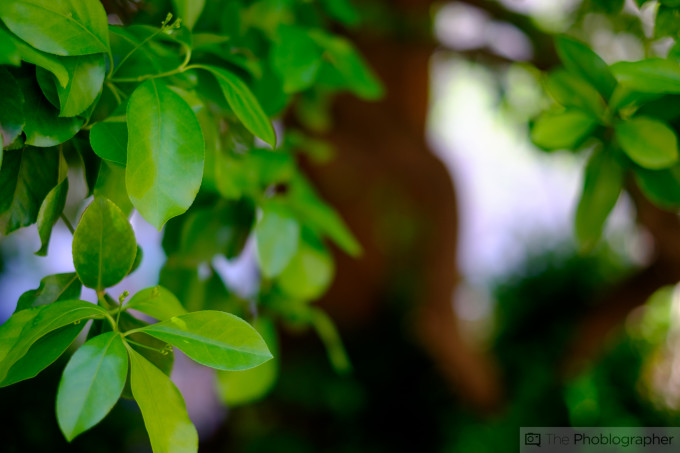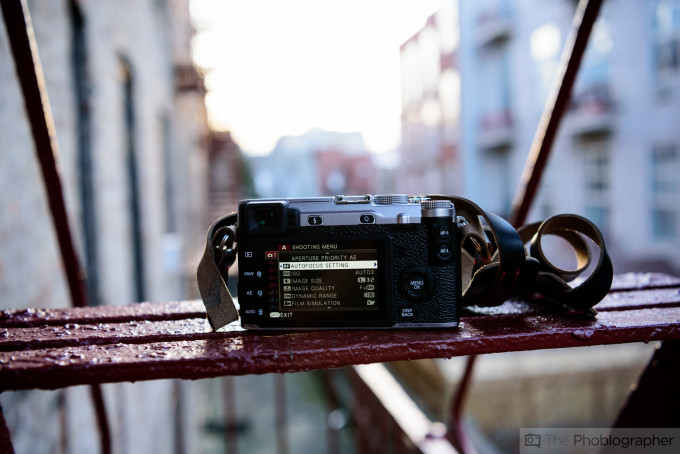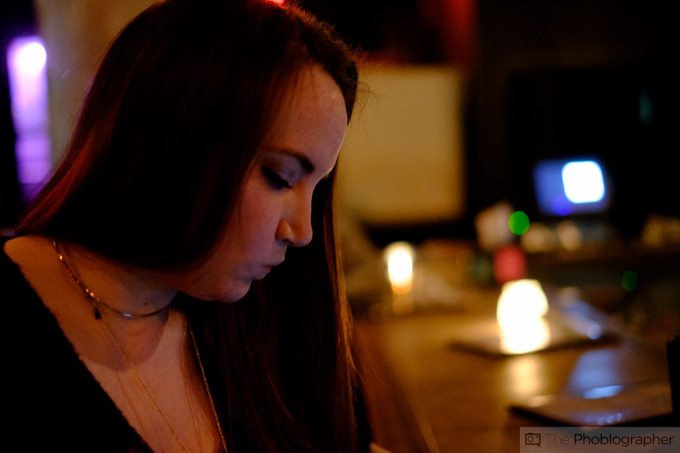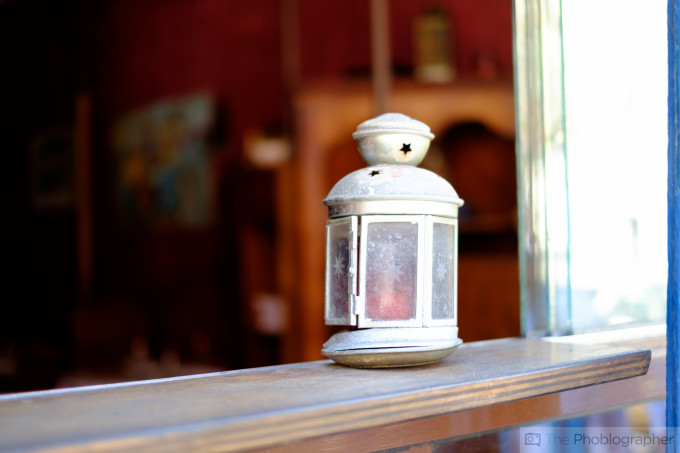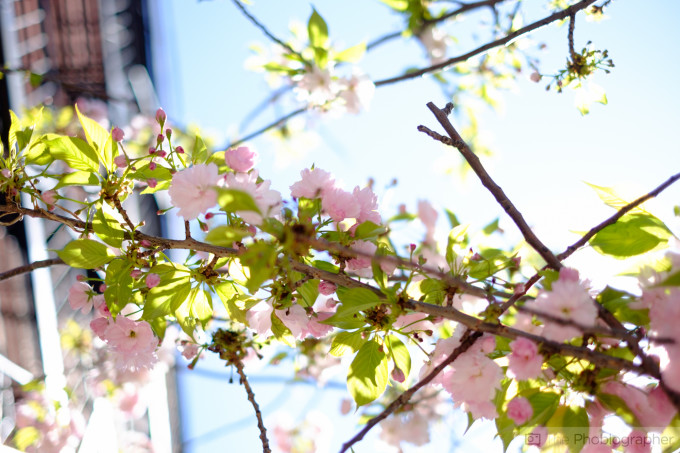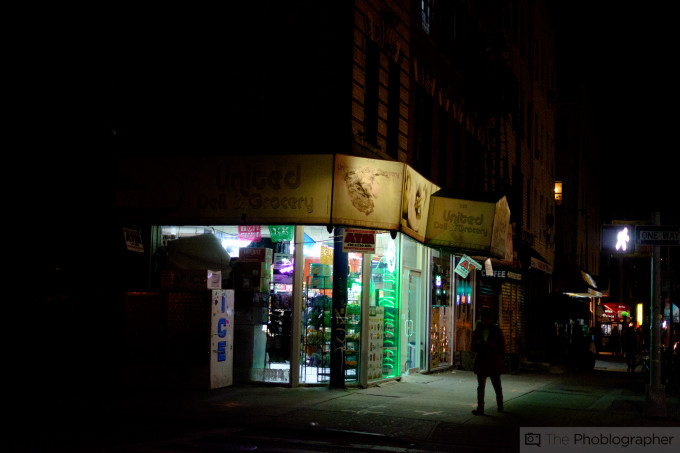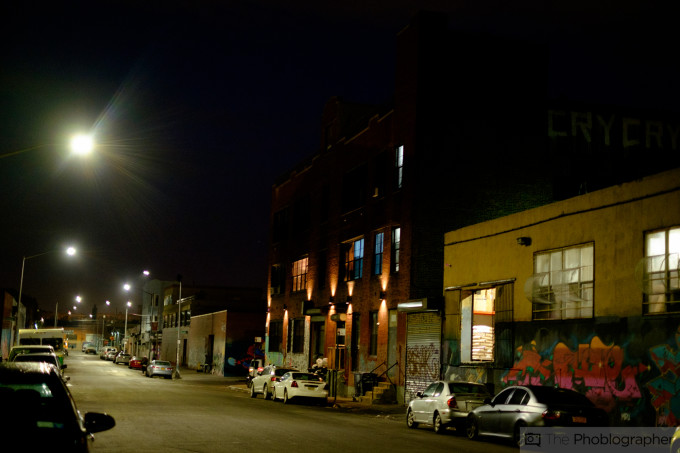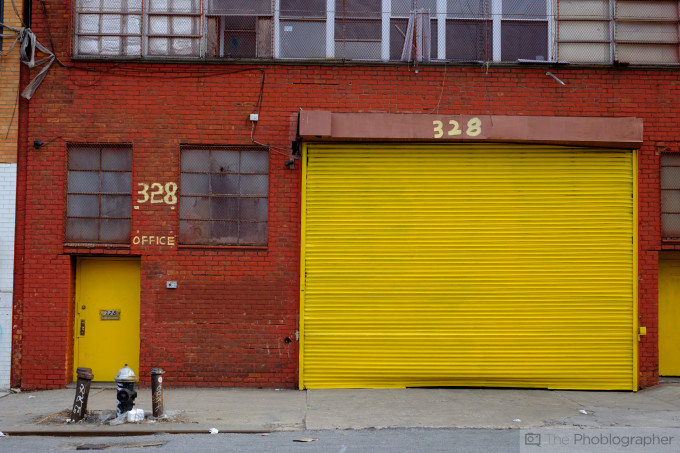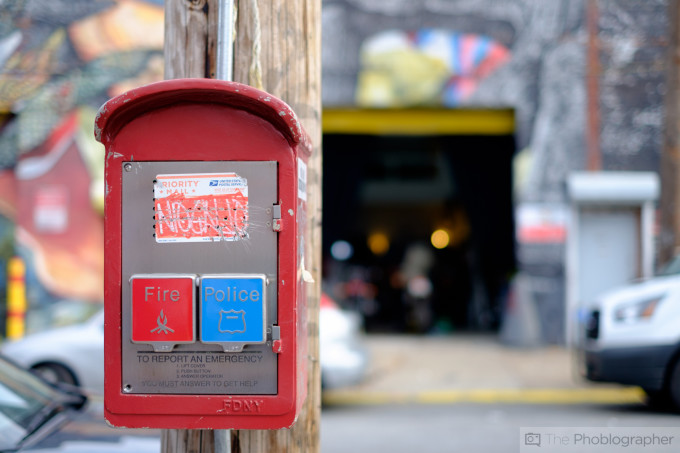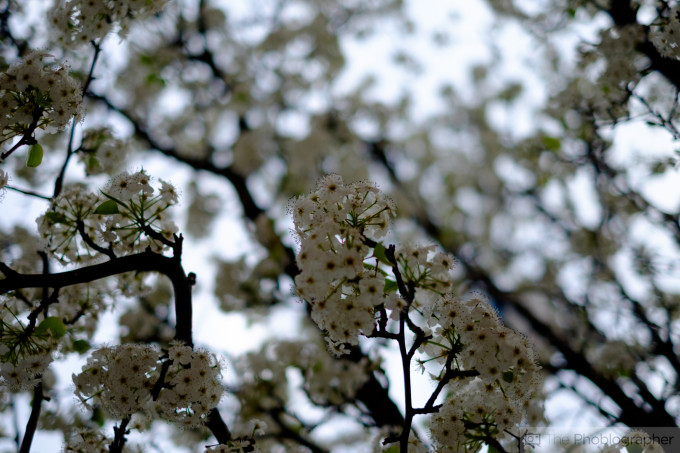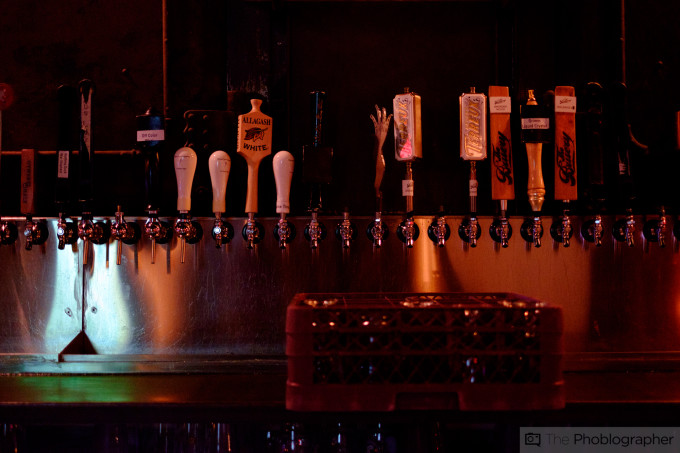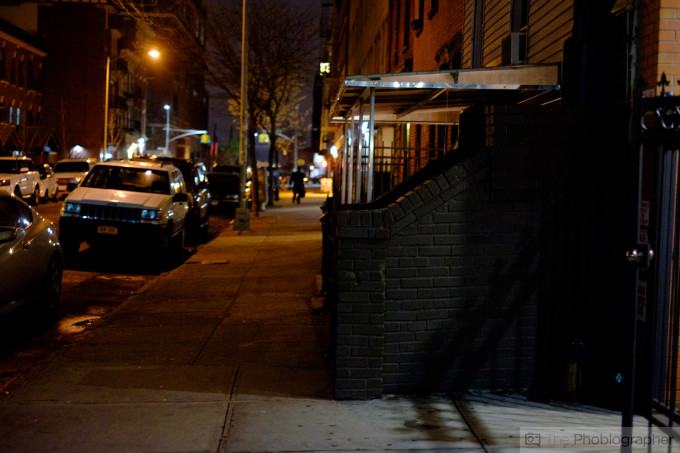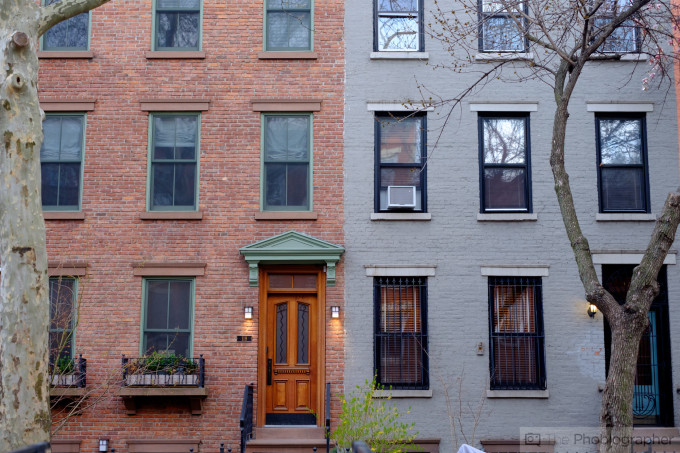Last Updated on 04/22/2016 by Chris Gampat
Years ago, Fujifilm released the X-E2. This year, they announced and released the X-E2s–which is essentially just a couple of changes and updates that have been incorporated into previous cameras. It hosts a 16MP APS-C sensor, autofocus performance boosts from its predecessor, and the new menu style that Fujifilm embraces.
But in many ways, this is a camera that should have come out a while ago.
Pros and Cons
Pros
- Pretty fast autofocus overall though very fast for Fujifilm
- Pretty nice ergonomics
- Fantastic color rendition
- Pretty good RAW file versatility
- Incredible battery life; probably the best of any mirrorless camera I’ve tested
- Small size without compromising comfort
- Electronic shutter is a great upgrade
- If you used the Fujifilm X Pro 1, you’ll like the ergonomics and ease of use here.
Cons
- If you use the Fujifilm X Pro 2 first, you’ll be very spoiled
- Really wish that ISO selection and focus point selection was faster
- 16MP sensor is starting to show its age at higher ISO outputs
- Doesn’t feel like enough of an upgrade
Gear Used
The Fujifilm XE2s was tested with the Fujifilm XE2s and the Hawkesmill flat lug camera strap.
Tech Specs
Specs taken from the Fujifilm camera page.
| Model Name | FUJIFILM X-E2S |
|---|---|
| Number of effective pixels | 16.3 million pixels |
| Image sensor | 23.6mm x 15.6mm (APS-C) X-Trans CMOS II with primary color filter Total number of pixels: 16.7 million pixels
|
| Storage media | SD memory card / SDHC memory card / SDXC (UHS-I) memory card*1 |
| File format |
|
| Number of recorded pixels | L: (3:2) 4896 x 3264 / (16:9) 4896 x 2760 / (1:1) 3264 x 3264 M: (3:2) 3456 x 2304 / (16:9) 3456 x 1944 / (1:1) 2304 x 2304 S: (3:2) 2496 x 1664 / (16:9) 2496 x 1408 / (1:1) 1664 x 1664<Motion Panorama> L: Vertical: 2160 x 9600 / Horizontal: 9600 x 1440 M: Vertical: 2160 x 6400 / Horizontal: 6400 x 1440 |
| Lens mount | FUJIFILM X mount |
| Sensitivity | AUTO1/AUTO2/AUTO3 (Control available up to ISO 6400) Equivalent to ISO 200 – 6400 (Standard Output Sensitivity) Extended output sensitivity : Equivalent ISO 100, 12800, 25600 and 51200 |
| Exposure control | TTL 256-zone metering, Multi / Spot / Average |
| Exposure mode | Programmed AE / Shutter Speed priority AE / Aperture priority AE / Manual exposure |
| Exposure compensation | -3.0EV – +3.0EV, 1/3EV step (movie recording : -2.0EV – +2.0EV) |
| Image Stabilizer | Supported with OIS type lenses |
| Face Detection | Yes |
| Shutter type | Focal Plane Shutter |
| Shutter speed | (Electronic Shutter mode) 1sec. to 1/32000sec. *3 (P mode) 4sec. to 1/4000sec., (All other modes) 30sec. to 1/4000sec., Time 30sec. to 1/4000sec., Bulb (max.60min.), Synchronized shutter speed for flash : 1/180sec. or slower |
| Continuous shooting | Approx. 7.0 fps (JPEG : max. approx. 18 frames) Approx. 3.0 fps (JPEG : up to the capacity of the card)
|
| Auto bracketing | AE Bracketing (±1/3EV, ±2/3EV, ±1EV) Film Simulation Bracketing (Any 3 types of film simulation selectable) Dynamic Range Bracketing (100% · 200% · 400%) ISO sensitivity Bracketing (±1/3EV, ±2/3EV, ±1EV) White Balance Bracketing (±1, ±2, ±3) |
| Focus |
|
| White balance | Automatic scene recognition Custom / Color temperature selection (K) Preset : Fine / Shade / Fluorescent light (Daylight) / Fluorescent light (Warm White) / Fluorescent light (Cool White) / Incandescent light / Underwater |
| Self-timer | 10 sec. / 2 sec. Delay |
| Interval timer shooting | Yes (Setting : Interval, Number of shots, Startinng time) |
| Flash | Manual pop-up flash (Super Intelligent Flash) Guide number : approx. 5 (ISO100 · m) / approx. 7 (ISO200 · m) |
| Flash modes | Activated when external flash is connected
|
| Hot shoe | Yes (Dedicated TTL Flash compatible) |
| Viewfinder | 0.5-in., approx. 2.360K-dot OLED color viewfinder Coverage of viewing area vs. capturing area : approx. 100% Eye point : approx. 23mm (from the rear end of the camera’s eyepiece) Diopter adjustment : -4m-1 to +2m-1 Magnification : 0.62x with 50mm lens (35mm format equivalent) at infinity and diopter set to – 1.0m-1 Diagonal angle of view : approx. 30° (Horizontal angle of view : approx. 25°) Built-in eye sensor |
| LCD monitor | 3.0-inch, aspect ratio 3:2, approx. 1,040K-dot, color LCD monitor (approx. 100% coverage) |
| Movie recording | Full HD 1920 x 1080 60p / 50p / 30p / 25p / 24p, Continuous recording : up to approx. 14 min. HD 1280 x 720 60p / 50p / 30p / 25p / 24p, Continuous recording : up to approx. 27 min.
|
| Photography functions | Advanced SR AUTO, Eye detection AF, Face Detection, Interval timer shooting, Auto Red-eye Removal, Select custom setting, Motion panorama, Color space, Setting (Color, Sharpness, D-range, Gradation), Film Simulation, Advanced Filter, Framing guideline, Frame No. memory, Histogram display, Preview depth of focus, Lens Modulatioon Optimizer, Pre-AF, Focus check, Focus Peak Highlight, Digital Split Image™ *4, Electronic level, Multiple exposure, Release priority / Focus priority selection, Fn button setting (RAW, Movie, etc.), ISO AUTO control, Instant AF setting (AF-S/AF-C), Interlock spot AE & Focus area, Selector button setting, AE-L/AF-L button setting, Edit/Save quick menu, Shutter Type |
| Film Simulation mode | 11 type (PROVIA/STANDARD, Velvia/VIVID, ASTIA/SOFT, CLASSIC CHROME, PRO Neg Hi, PRO Neg. Std, MONOCHROME, MONOCHROME+Ye FILTER, MONOCHROME+R FILTER, MONOCHROME+G FILTER, SEPIA) |
| Dynamic range setting | AUTO, 100%, 200%, 400% |
| Advanced filter | Toy camera / Miniature / Pop color / High-key / Low-key / Dynamic tone / Soft focus / Partial color (Red / Orange / Yellow / Green / Blue / Purple) |
| Playback functions | RAW conversion, Image rotate, Auto image rotate, Face Detection, Red-eye reduction, Photobook assist, Erase selected frames, Image search, Multi-frame playback (with micro thumbnail), Slide show, Mark for upload, Protect, Crop, Resize, Panorama, Favorites |
| Wireless transmitter |
|
| Wireless function | Geotagging, Wireless communication (Image transfer), View & Obtain Images, Remote camera shooting, PC Autosave, instax printer print |
| Other functions | PictBridge, Exif Print, 35 Languages, Date/Time, Time difference, Sound & Flash, High Performance, Preview exp. in Manual mode, EVF Brightness, LCD Brightness, Preview Pic. Effect, DISP. Custom Setting |
| Terminal |
|
| Power supply | NP-W126 Li-ion battery (included) |
| Dimensions | 129mm (W) x 74.9mm (H) x 37.2mm (D) / 5.08in. (W) x 2.95in. (H) x 1.47in. (D) (Minimum Depth : 30.9mm / 1.22 in.) |
| Weight | Approx. 350g / 12.3 oz. (including battery and memory card) Approx. 300g / 10.6 oz. (excluding accessories, battery and memory card) |
| Operating Temperature | 0°C – 40°C (+32°F – +104°F) |
| Operating Humidity | 10 – 80% (no condensation) |
| Battery life for still images*5 | Approx. 350 frames (When XF35mmF1.4 R is set, LCD monitor on) |
| Battery life for movies*5 | Consecutive movie recording : approx. 110 min. (Face detection is set to OFF)
|
| Starting up period | Approx. 0.5 sec., when High Performance mode set to ON Approx. 1.0 sec., when High Performance mode set to OFF
|
| Accessories included | Li-ion battery NP-W126 Battery charger BC-W126 Shoulder strap Body cap Metal strap clip Protective cover Clip attaching tool Owner’s manual |
Ergonomics
The Fujifilm XE2s is a camera that looks and feels much like its predecessor. For many of us that’s a great thing. The front of the camera is almost devoid of controls and buttons with the exception of the lens release and the focusing type switch. Veteran Fujifilm camera users will be very happy to know that these are still present.
Move to the top of the camera and what you’ll find are other controls that will remind you a lot of the Fujifilm X Pro 1. Here you’ll find a shutter dial, shutter release, function button and an exposure compensation dial.
The back of the camera is also much like the older ones with the menu layout buttons being around the LCD screen. With the new X Pro 2, everything is on the right hand side.
The back of this camera has a number of buttons including directional buttons that are also programmable.
Build Quality
This camera hasn’t really been put through some major paces; though it was ourdoors with me one time during a brief drizzle. The camera survived the drizzle with no problems. However, it isn’t billed as being weather resistant, so I will always advise caution.
The camera overall though is exceptionally comfortable in the hand.
Autofocus
The autofocus performance of the Fujifilm XE2s is faster than the X Pro 1 for sure and probably about on par with the X-T1–one of the company’s flagship cameras. With that said it’s also about right on par with the X-T10 though it can’t touch the X Pro 2.
In low light situations, the autofocus performance continued to impress me.
Ease of Use
There are some additions to make the X-E2s a bit more complicated than other cameras: the mechanical vs electronic shutter, the flash addition, etc. With every Fujifilm camera, you’re going to need to set up the LCD screen and function buttons to act just how you want them to. I often set the top function button to control the ISO rather than go through the quick menu, scroll to the ISO and then switch.
Otherwise, using the camera isn’t too bad and the act of creating an exposure is a pleasant experience that becomes even more versatile with the addition of the electronic shutter. The reason for this is because you can shoot with a lens wide open in super bright sunlight because of the way it’s designed.
Metering
In our tests, we found the metering of the camera to be a bit under what standard Sunny 16 readings would provide. That’s very typical for digital cameras though; and if you get something that matches it perfectly then you’ll find a unicorn.
Image Quality
The Fujifilm X-E2s reminds me a lot of many other Fujifilm cameras with the exception of the X Pro 2. Lots of the image quality seems spot on but there is something about it that actually also seems to embrace the more vintage look than others. Where the X-T10 showed off absolutely incredible colors, the X-E2s is a bit muted even when set to Velvia.
Beyond this, there is a lot that is consistent with the other cameras.
JPEG Quality
Fujifilm’s JPEG files are second to none and the same is the truth here with the X-E2s. The JPEGs are beautiful and if you wanted to, you can even just work with them as is.
What I’m kind of bummed about is that Acros isn’t with this camera.
High ISO Output
The high ISO output of this camera delivers some noise at ISO 6400 that when viewing the image at a whole isn’t very visible on first glance until you really start looking for it. Zoom in at 100% like most of us absolutely don’t need to, and you’ll change your opinion because you’re viewing a piece of a whole.
RAW File Versatility


The X-E2s’ RAW files are very versatile with lots of detail being recovered from the highlights and a fair amount from the shadows. With the shadows though, you’re bound to create more noise than with the X Pro 2’s.
In fact, this sensor is more on par with the X-t10’s when it comes to versatility. The X-T1 has a more versatile sensor from what I see here and maybe it has a part to do with the processor.
Extra Image Quality
Conclusions
Likes
- Not at all a bad camera
Dislikes
- I feel like Fujifilm could have stepped even further.
In all honesty, I have very mixed feelings about the Fujifilm X-E2s. It’s not at all a bad camera–in the hands of any capable professional it’s going to help them create wonderful images. But to be brutally honest here, it seems like Fujifilm held themselves back.
For what it’s worth, the camera now seems to be just right on par with everything that they released last year and the year previous. That’s not at all to say that those products are bad; but in that line of thought this camera should have been released a year or two ago. What I expected is something further ahead than some of their first generation productions. Instead, it’s on par in terms of autofocus with the X-T1 and comparable in some ways to the image quality from the X-T10 though it surely has its nice antique style differences.
Does that make any of this bad? Heck no. You X-T1 and the X-T10 are still wonderful cameras. But what I expect from a second generation product is second generation technology, not a recycle of parts from your previous cameras.
Because of all this, the Fujifilm X-E2s receives three out of five stars. It isn’t a bad camera, but I’m fairly disappointed that it doesn’t do more.


